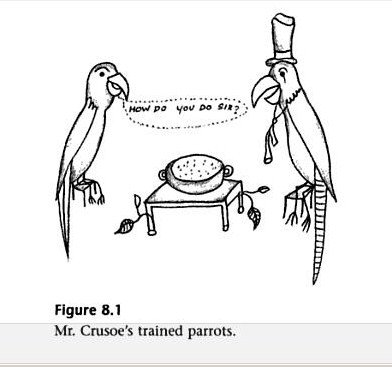In the magazine section on the BBC news website today is a feature on wild parrots picking up phrases from domesticated birds.
The article begins:
Wild parrots in Australia are apparently picking up phrases from escapee pet cockatoos who join their flocks. Why – and how – can some birds talk?
Those strolling in Sydney’s parks are being startled by squawks of “Hello darling!” and “What’s happening?” from the trees.
Wild birds such as galahs, sulphur-crested cockatoos and corellas are repeating phrases passed on by domesticated counterparts that escaped or were released, says naturalist Martyn Robinson, of Sydney’s Australian Museum.
The museum has received numerous reports of talkative wild birds from startled members of the public.
You can continue reading the article here http://www.bbc.co.uk/news/magazine-14930062. It talks a bit about how parrots can produce human like sounds but I posted the story here because I found it interesting that wild birds would pick up human phrases through social learning and wondered how far these phrases could go through a process of cultural transmission.

It reminded me of this figure from Eva Jablonka and Marion J. Lamb’s book “Evolution in four dimensions: genetic, epigenetic, behavioral, and symbolic” inspired by a story by Spalding (1876). The story tells of Robinson Crusoe landing on his island and teaching 2 parrots the phrase “how do you do sir?”. He continues to teach the phrase to the offspring of these parrots for some generations. Crusoe then (because he’s on a dessert island and he’s bored) breeds the parrots who say “how do you do sir?” the best. After a while the young parrots start to repeat the phrase so early it is not known if it is learned behaviour or instinct. It is found to have become instinct because Crusoe selected for the best learners and the parrots will presumably continue this behaviour long after Crusoe has died. Spalding then hypothesises that should the parrots acquire a taste for good English this behaviour should continue to be selected through sexual selection. Taking figure 8.1 at face value it seems the parrots are also selected for fine taste in hats and ability to sit properly on chairs.
